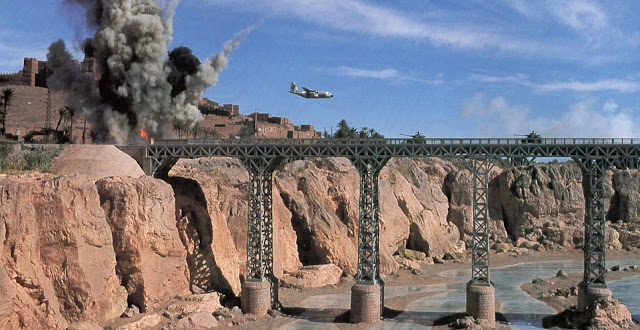John Richardson was born in 1946 in London and his father, Cliff Richardson, was one of the special effects pioneers in England - he started his career in 1921 with the Stoll Picture Company’s “Grand Guignal” series, before going on to work with Alfred Hitchcock at Elstree and later running the effects department at Ealing Studios. When John was 14, he went to Israel as Cliff was working on “Exodus”, got a job on the crew and served his apprenticeship through the 1960s, branching out on his own with “Duffy” in 1968. He won an Oscar for his work on “Aliens” (1987) and was nominated for “Cliffhanger” (1993), “Starship Troopers” (1997) and three of the Harry Potter films.
His Bond career is:
Moonraker and For Your Eyes Only (special effects - Derek Meddings supervised the miniatures)
Octopussy and A View To a Kill (special effects supervisor)
The Living Daylights and Licence To Kill (special visual effects)
Tomorrow Never Dies, The World Is Not Enough and Die Another Day (miniatures supervisor)
Octopussy (1983)
Directed by John Glen
The aircraft hanger, in the pre-credits sequence, was a combination of full-size, shot at RAF Northolt in 311 Hanger featuring foreground miniatures and a large-scale miniature built at Pinewood. Bond, in the Acrostar jet, is being pursued by a heat-seeking missile and flies through the hanger he was trying to blow up, even as the enemy try to close the doors...
John Glen explained the shot in interview - "The plane is on wires and we're using a foreground miniature [which] we scaled exactly so that when it was in position, it fooled you completely and you thought you were looking at the whole structure. That door on the left is just beyond the soldier, while the rest of the hangar is about 50 yards away."
Bond's plan works perfectly and as he zips away, the hanger goes up in a massive explosion...
 |
| The miniature being prepared. Each "sheet" of metal was attached individually, so the destruction would be more realistic |
 |
| Still from the film |
The full John Glen interview is here
A View To A Kill (1985)
Directed by John Glen
The Living Daylights (1987)
Directed by John Glen
 |
| Richardson, on location in Morocco, with the radio-controlled Hercules |
Later, in the same sequence, Bond lends some air support to his freedom-fighter colleagues who are racing across a bridge. Richardson said, at the time, “There never was a bridge like the one you see in the film. Lengthwise, it was the same as the one you see on screen, but height-wise it was at most fifteen or twenty feet above the river bed. Of course, that wouldn't look very spectacular when it s collapsing so we constructed a foreground miniature of the ravine and a different bridge. We used the existing bridge from the handrail down to the road level so that you could see vehicles driving along it, but everything beneath that was a miniature, approximately twenty feet across and four-and-a-half feet high. It was shot twenty-three feet from the camera, whilst the real bridge was about a thousand feet away.”
 |
| still from the film |
 |
| left - the read bridge, without the foreground miniature (which is shown in the picture on the right) |
Directed by Roger Spottiswoode
The Stealth boat, which was filmed in the Fox Baja tank (where James Cameron made "Titanic")
The World Is Not Enough (1999)
Directed by Michael Apted
A key part of the plot involves the King pipeline and whilst the exterior was filmed in Cwm Dyli, Snowdonia, some sequences (including the explosion) were shot at Hankley Common in Surrey (where, much later, the Bond home would be built for "Skyfall").






You wrote "John Richardson was born in 1946 in London and his father, Cliff Robertson".
ReplyDeleteDid you mean his father was Cliff RICHARDSON?
P.S. Great blog. I love movie effects. I found this blog when I went searching for pictures of the miniature bridge in "The Living Daylights". I didn't have that issue of Cinefex at hand.
I did, thanks for the spot (edited now). Glad you enjoyed the blog, thanks for commenting!
DeleteGreat stuff thanks Mark
ReplyDeleteThanks for commenting Neil!
Delete